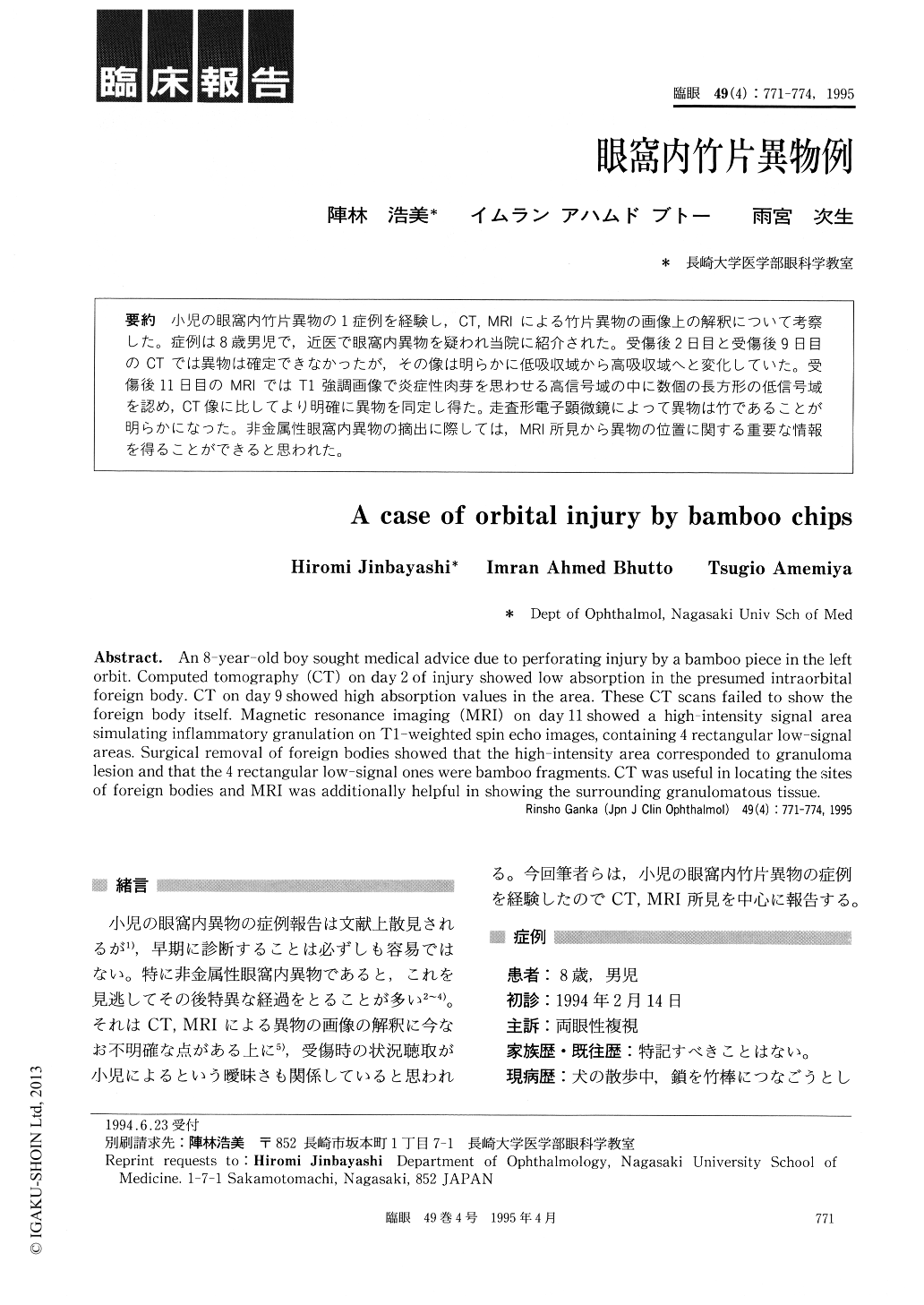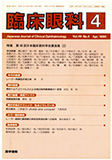Japanese
English
- 有料閲覧
- Abstract 文献概要
- 1ページ目 Look Inside
小児の眼窩内竹片異物の1症例を経験し,CT, MRIによる竹片異物の画像上の解釈について考察した。症例は8歳男児で,近医で眼窩内異物を疑われ当院に紹介された。受傷後2日目と受傷後9日目のCTでは異物は確定できなかったが,その像は明らかに低吸収域から高吸収域へと変化していた。受傷後11日目のMRIではT1強調画像で炎症性肉芽を思わせる高信号域の中に数個の長方形の低信号域を認め,CT像に比してより明確に異物を同定し得た。走査形電子顕微鏡によって異物は竹であることが明らかになった。非金属性眼窩内異物の摘出に際しては,MRI所見から異物の位置に関する重要な情報を得ることができると思われた。
An 8-year-old boy sought medical advice due to perforating injury by a bamboo piece in the left orbit. Computed tomography (CT) on day 2 of injury showed low absorption in the presumed intraorbital foreign body. CT on day 9 showed high absorption values in the area. These CT scans failed to show the foreign body itself. Magnetic resonance imaging (MRI) on day 11 showed a high-intensity signal area simulating inflammatory granulation on T1-weighted spin echo images, containing 4 rectangular low-signal areas. Surgical removal of foreign bodies showed that the high-intensity area corresponded to granuloma lesion and that the 4 rectangular low-signal ones were bamboo fragments. CT was useful in locating the sites of foreign bodies and MRI was additionally helpful in showing the surrounding granulomatous tissue.

Copyright © 1995, Igaku-Shoin Ltd. All rights reserved.


